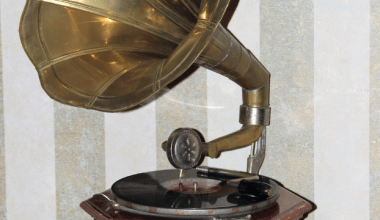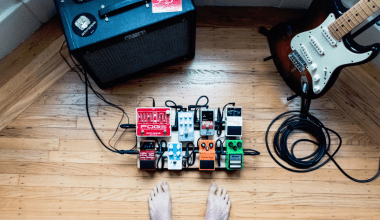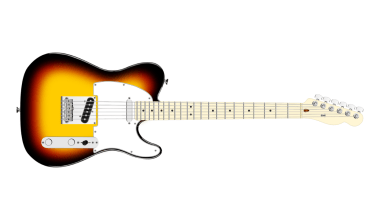In today’s digital-first world, an e-press kit (electronic press kit) is a must-have for musicians, businesses, and creatives. Whether you’re a rising musician, a startup founder, or a public speaker, having a professional e-press kit helps you share your story, pitch your projects, and attract opportunities.
Gone are the days of bulky printed materials; now, a sleek, organized, and accessible e-press kit can open doors to new audiences and partnerships. In this guide, we’ll walk you through everything you need to know about creating an impressive e-press kit that gets noticed.
What Is an E-Press Kit?
An e-press kit, also known as a digital press kit or EPK, is a professional digital document or package containing essential information about you, your brand, or your organization. It is designed for media outlets, event organizers, clients, and collaborators to quickly understand who you are and what you offer.
Your e-press kit serves as a one-stop shop that includes:
- A professional bio
- High-quality photos
- Key achievements
- Contact information
- Samples of your work (audio, video, or portfolio links)
Think of it as your digital elevator pitch, tailored to impress.
Why You Need an E-Press Kit
Whether you’re a musician, entrepreneur, or public figure, an e-press kit can make all the difference in your career. Here’s why:
- Convenience for Stakeholders: Promoters, journalists, and collaborators can easily access your information in one place.
- Professional Presentation: A polished e-press kit reflects your commitment to your craft or business.
- Time-Saving: You won’t need to repeatedly compile materials or send emails.
- Increased Opportunities: A good e-press kit can catch the attention of media and decision-makers.
Essential Elements of an E-Press Kit
Every e-press kit should include the following core components:
1. Bio
Write a compelling bio that introduces you or your brand. Be concise yet engaging, covering who you are, what you do, and why it matters.
2. Media Assets
High-quality images, logos, or headshots are essential. Make sure they are downloadable and ready for use in press coverage.
3. Contact Information
Provide an email address, phone number, and social media handles. Make it easy for people to reach you.
4. Portfolio/Work Samples
Include relevant examples of your work: music tracks, videos, blog links, or project summaries.
5. Press Coverage
Highlight past media mentions, reviews, or collaborations. It builds credibility and trust.
6. Call-to-Action (CTA)
End with a clear CTA. Invite journalists to interview you, event planners to book you, or brands to collaborate with you.
Creating an E-Press Kit: Step-by-Step Guide
Step 1: Define Your Goals
What do you want your e-press kit to achieve? Whether it’s promoting an album, announcing a launch, or seeking speaking engagements, clarity is key.
Step 2: Choose a Format
Your e-press kit can be:
- A downloadable PDF
- A dedicated webpage
- A multimedia presentation
Step 3: Gather Your Content
Collect everything you want to include. Ensure it’s professional, up-to-date, and tailored to your target audience.
Step 4: Design Your E-Press Kit
Use tools like Canva, Adobe InDesign, or online templates to create a visually appealing layout. Ensure your design reflects your brand identity.
Step 5: Test Accessibility
Make sure your e-press kit is easy to view, download, and share across devices.
E-Press Kit Examples by Industry
For Musicians
A musician’s e-press kit should include:
- A bio with your genre and influences
- Links to streaming platforms like Spotify or Beatport
- Tour dates and venues
- Album artwork
For Businesses
A business-focused e-press kit might feature:
- Company background
- Key achievements or milestones
- Product or service highlights
For Public Figures
Public figures or speakers should prioritize:
- A speaker profile
- Videos of past engagements
- A list of topics they cover
Tips for Optimizing Your E-Press Kit
- Update Regularly: Keep your content fresh to reflect new milestones or achievements.
- Keep It Concise: Avoid overwhelming your audience with unnecessary details.
- Use High-Quality Visuals: First impressions matter, and visuals can make or break your e-press kit.
- Add Social Proof: Include testimonials, reviews, or metrics to build trust.
Tools to Create Your E-Press Kit
- Canva: Easy-to-use templates and customization.
- Adobe Creative Suite: Advanced tools for professional design.
- Squarespace or Wix: Perfect for creating dedicated web pages.
- Google Drive: For quick sharing of files and folders.
Once your e-press kit is ready, share it strategically:
- Email pitches to journalists or event organizers
- Link it on your website or social media bios
- Include it in newsletters or promotional emails
The Future of E-Press Kits
As technology evolves, so will e-press kits. Incorporating interactive elements like embedded videos, AR experiences, or live data can elevate your e-press kit to new heights.
Whether you’re an artist selling music on platforms like Beatport or a startup looking to expand, a well-crafted e-press kit is your ticket to success.
Conclusion
Creating an e-press kit is not just a task; it’s an investment in your professional growth. By following this guide, you’ll craft an e-press kit that showcases your best work, captures attention, and opens doors to exciting opportunities.
Related Articles:
For further reading, explore these related articles:
- Music Press Release Format Made Easy: Step-by-Step Guide
- Music Press Release Template: Your Complete Guide to Promoting Your Music
- Creating an Impressive Music Industry Resume: A Comprehensive Guide
For additional resources on music marketing and distribution, visit Deliver My Tune.






